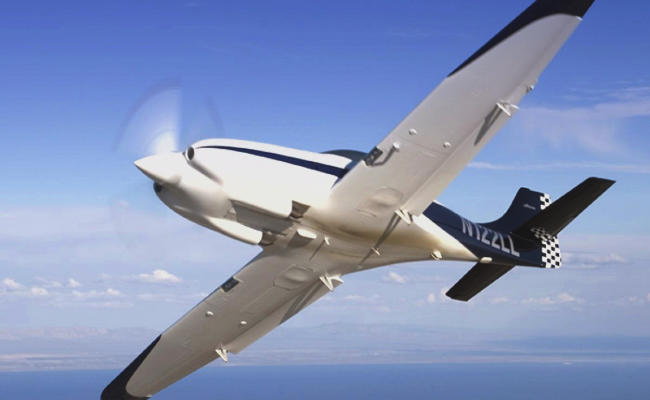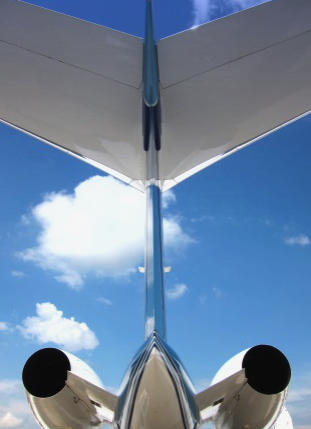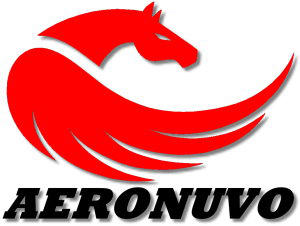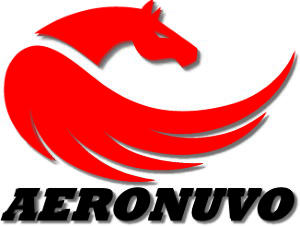
© AERONUVO, The Professional and Expert Aircraft Appraisal and Valuation Services Company - All Rights Reserved 2002-2018
AIRCRAFT APPRAISAL ENGINE TERMINOLOGY
AND DEFINITIONS
Aircraft Appraiser and FAA Standards for New, New Limits,
Remanufactured, Service Limits, Overhaul and More . . . .
If you are not sure of the meaning of such terms as normally aspirated, turbocharged, supercharged or direct-drive engines, then perhaps you’ll want to read AERONUVO's simplified definition of them. An aircraft appraiser must take into account the maintenance status of the aircraft engines. Vauation of these engines is an important component of an aircraft appraisal. AERONUVO, the Aircraft Appraisal and Valuation Company, will thoroughly review the engine log books when conducting an appraisal. The Normally Aspirated Engine is one that is not turbocharged or supercharged. If the airplane has a manifold pressure gauge, at full takeoff power at sea level on a standard day, it would indicate an MP reading of approximately 29" of Hg. Takeoff power at 5,000 ft. density altitude airport would read about 24" MP. The normally aspirated engine uses atmospheric pressure and is thereby altitude limited. Direct-Drive Engines are those piston-powered engines where the propeller is bolted on the end of the crankshaft, and the prop turns at the same speed as the crankshaft. Geared Engines are usually the higher powered, more complex engines using a reduction gear on the nose of the aircraft, and with the prop attached to it. As a result, the prop will turn somewhat slower than the crankshaft, resulting in a lower prop noise level. Sometimes, when the engine is geared, the engine designation is preceded with a “G.” Thus a geared, opposed (O) normally aspirated engine with a 480-cubic inch displacement of the cylinders would be designated a GO-480 model. Turbocharged Engines simply consist of a turbocharger unit with a small turbine wheel attached by a common shaft to a compressor wheel, and utilizes the engine exhaust gas by directing it over the turbine wheel to drive the compressor. The horsepower loss in operating the turbocharger is negligible. Turbocharging can provide greater utility to the piston engine by providing sea-level horsepower, in some models, as high as 20,000 feet; or it can be used to add horsepower to the engine particularly for takeoffs. The faster the engine runs, the more air the turbocharger can pack into the cylinder to compensate for the thin air of altitude, or to increase the horsepower. Although this definition is somewhat oversimplified, it is a basic definition of turbocharging of General Aviation power plants. Supercharged Engines use a compressor wheel to pack air into the cylinders; but the compressor is driven by the crankshaft through an intricate gearing system, which takes considerable horsepower from the engine to operate. In comparison with a turbocharged engine, it is a medium altitude power plant. Although supercharged engines could be built today by Lycoming and Continental, new aircraft designs during the past 20 or more years have used turbocharging instead of supercharging because of the advantages that turbocharging offers. Terminology and Standards of Aircraft Engine Overhaul Terms that are used and approved by the FAA an the Aircraft Appraiser. Whether you are appraising or purchasing a used aircraft, the points of concern are the items that affect the price. An Aircraft Appraiser must pay special attention to the engines, as this is where a significant amount of the aircraft’s value lies. A full understanding of the aircraft’s engines is crucial to determining its overall value. There are a great deal of other items that determine the aircraft value and ending market value price that and each one carries its own terminology. Being an expert in determining how these various parts of an aircraft appraisal influence the price takes many years of experience but will ultimately get you the most out of your aircraft.New Engine:
A new engine is one that has been manufactured from all new parts and tested by an FAA-approved manufacturer such as Lycoming and Continental. The engine will have no operating history except for test cell time when received. No FAA-approved manufacturer can approve another entity to manufacture or assemble a NEW ENGINE.New Limits:
These are the FAA-approved fits and clearances manufacturers adhere to with new engine. This may be accomplished using standard or approved undersized and oversized dimensioned parts.Service Limits:
The service limits are the FAA-approved allowable wear fits and tolerances to which a new limit part may deteriorate and still be a useable component. This may also be accomplished using standard and approved undersized and oversized dimensions.Overhauled Engine:
An engine that has been disassembled, cleaned, inspected, repaired in accordance with manufacture overhaul instructions and tested using FAA-approved procedures. The engine may be overhauled to new limits or service limits and still be considered an FAA-approved overhaul. The engine’s previous operating history is maintained and it is returned to you with zero time since a major overhaul and a total time since new. Of course, the total time since new is the same as before the overhaul.Rebuilt Engine:
This is an engine that has been overhauled using new and used parts to new limits by the manufacturer or an entity approved by the manufacturer. The engine’s previous operating history is eradicated, even though the engine may have used components installed that have many hours of operating history, and it comes to you with zero hours total time in service.O.E.M. and Aftermarket:
When an engine is overhauled or rebuilt, the new parts that are used during the repair process can come from a variety of sources. An Original Equipment Manufacturer or “O.E.M.” part is a new part that is manufactured by the original engine manufacturer to stringent FAA standards. An “aftermarket” part is a new part that is manufactured by someone other than the original engine manufacturer and meets or exceeds the same stringent FAA guidelines as a new OEM part. Save for factory remanufactures, all overhauls are permitted by the FAA to be performed to either new or service limits.Service Limit Overhaul:
By definition, an aircraft engine overhaul involves cleaning, carefully inspecting, and repairing or replacing parts to meet service limits. It is therefore entirely legal to placea used part that meets only service limits into an overhauled engine as a replacement. This type of overhaul is known as a service limit overhaul, and is commonly seen in factory engine overhauls. Unfortunately, this practice allows manufacturers to reinstall a part that checks out during inspection with a service limit reflecting considerable wear before that part is considered to be out of service limits. For this reason, service limit overhauls aren’t very likely to reach TBO without requiring further maintenance down the road.New Limit Overhaul:
While in some special cases installing a service limit part might be acceptable, given the expense and time cost of performing an overhaul, it’s usually a good idea to request that parts used in the overhauled engine meet new limits. This type of overhaul is known as a new limit overhaul and will help you to establish a baseline of wear that is consistent with a new engine, extend the life of your engine, and preserve the resale value of your aircraft. If you’re looking for your engine to reach TBO and have reliability and longevity, a new limit overhaul is usually your best choice. When Time Before Overhaul or "TBO" time rolls around, it’s important to remember that new engines made it there because of the new limit requirements of the engine manufacturer. So when you make your decision on aircraft engine maintenance, the safest bet is to stick with the limits that got your engine this far in the first place. Anything less could result in more costly maintenance down the road.


Facts About Banks and Asset
Based Lenders
Knowing the Value of an Aircraft by
Make and Model is Not Sufficient
Each year members of the National Aircraft Appraisers Association assist financial institutions as billions of dollars in new loans are originated involving the purchase, re-financing, and/or maintenance and updating of aircraft. In addition to appraising these airplanes for the original financing or refinancing NAAA members are often instrumental in helping bankers track their portfolio of collateral during the terms of their loans. National Aircraft Appraisers Association members independently appraise aircraft and give advice to lenders concerning escrow reserves for maintenance and other sensitive areas which affect the aircraft being used as collateral. Operating under the Uniform Standards of Professional Appraisal Practice (USPAP) our Senior Certified Aircraft Appraisers with a USPAP Endorsement write comprehensive reports that detail subject aircraft thoroughly for the purpose of collateral definition at the time a loan is made. Knowing the value of an aircraft by make and model is not sufficient to establish fair market value, collateral value, or other loan parameters. Lenders need information about the general condition of the aircraft, its maintenance schedule, avionics inventory, and its support systems which materially affect the value. Only a complete appraisal, which always includes a visit to the aircraft by an NAAA member, will insure that the aircraft is indeed what the banker has been led to believe it is.
Our Portfolio of Services
AERONUVO, The Aircraft Appraisal and Valuation Company provides competent, impartial, objective and independent valuation for buyers, sellers, banks, financing, leasing, underwriters, insurance adjusters, corporate flight departments, domestic and foreign corporations and individual owners. Our services also determine aircraft fair market property value to support purchases, sales, financing, legal proceedings and charitable contributions. Our portfolio includes single engine pistons, light and cabin class twins, single and twin engine turboprops, business jets with 10 seats or less and vintage aircraft. Our fees include IRS Form 8283 for Noncash Charitable Contributions, if requested. AERONUVO Aircraft Appraisals are sometimes requested in divorces, business loans, estate evaluations, partnership buy outs, or other situations. AERONUVO can deliver a professional opinion and appraisal report of the present market value price on an aircraft, the value on an aircraft to be renovated or modified and the value of an aircraft as a prudent safeguard against excessive tax assessments, capital gains and other taxes. Our Premier and Certified Aircraft Appraisal Services include Aeronca, Aero Commander, American Champion (ACA), American General, Aviat Husky and Pitts, Beechcraft (Beech), Bellanca, Citabria, Cessna, Cirrus, CubCrafters (Cub Crafters), DAHER SOCATA, Diamond, Ercoupe, Glasair, Great Lakes, Grumman American, Lancair, Luscombe, Maule, Mooney, Piper, Rockwell Commander, Stinson and More. AERONUVO provides its customers with our unique and customized aircraft appraisal services at many airports in some instances with no added cost in the states of Virginia (VA), West Virginia (WV), Pennsylvania (PA), Maryland (MD), Delaware (DE), North Carolina (NC) and New Jersey (NJ). Contact us to arrange your consulation today.The Aircraft Appraisal
and
Valuation Company
TOLL FREE 844.341.2376


- Aircraft Appraised
- Airports Served
- Aircraft Bluebook Report
- Cessna Aircraft Appraisals
- Beechcraft Aircraft Appraisals
- Mooney Aircraft Appraisals
- Piper Aircraft Appraisals
- Aero Commander Aircraft Appraisals
- American Champion Appraisals
- Aviat Husky & Pitts Appraisals
- Cirrus Aircraft Appraisals
- CubCrafters Aircraft Appraisals
- Daher Socata Aircraft Appraisals
- Diamond Aircraft Appraisals
- Glasair Aircraft Appraisals
- Grumman Aircraft Appraisals
- Lancair Aircraft Appraisals
- Luscombe Aircraft Appraisals
- Maule Aircraft Appraisals
- Rockwell Commander Aircraft Appraisals
- Stinson Aircraft Appraisals


- Aircraft in Divorce Settlements
- Insurance and the Aircraft Appraisal
- Appraisal Definitions
- What Is An Aircraft Appraisal Report
- Aircraft Fair Market Values
- Aircraft Appraiser Ethics
- Aircraft Engine Appraisal Terms
- Rent, Lease, Purchase Guide
- Aircraft Loan Process Checklist
- Critical Factors for Appraisals
- Selling Your Aircraft Guide
- IRS Tax Deductions Aircraft Appraisals
- Maintenance and the Appraiser
- Required FAA Records Review
- AERONUVO Web Site Map
AIRCRAFT APPRAISAL
ENGINE TERMINOLOGY
AND DEFINITIONS
Aircraft Appraiser and FAA Standards
for New, New Limits,
Remanufactured, Service Limits,
Overhaul and More . . . .
If you are not sure of the meaning of such terms as normally aspirated, turbocharged, supercharged or direct-drive engines, then perhaps you’ll want to read AERONUVO's simplified definition of them. An aircraft appraiser must take into account the maintenance status of the aircraft engines. Vauation of these engines is an important component of an aircraft appraisal. AERONUVO, the Aircraft Appraisal and Valuation Company, will thoroughly review the engine log books when conducting an appraisal. The Normally Aspirated Engine is one that is not turbocharged or supercharged. If the airplane has a manifold pressure gauge, at full takeoff power at sea level on a standard day, it would indicate an MP reading of approximately 29" of Hg. Takeoff power at 5,000 ft. density altitude airport would read about 24" MP. The normally aspirated engine uses atmospheric pressure and is thereby altitude limited. Direct-Drive Engines are those piston-powered engines where the propeller is bolted on the end of the crankshaft, and the prop turns at the same speed as the crankshaft. Geared Engines are usually the higher powered, more complex engines using a reduction gear on the nose of the aircraft, and with the prop attached to it. As a result, the prop will turn somewhat slower than the crankshaft, resulting in a lower prop noise level. Sometimes, when the engine is geared, the engine designation is preceded with a “G.” Thus a geared, opposed (O) normally aspirated engine with a 480-cubic inch displacement of the cylinders would be designated a GO-480 model. Turbocharged Engines simply consist of a turbocharger unit with a small turbine wheel attached by a common shaft to a compressor wheel, and utilizes the engine exhaust gas by directing it over the turbine wheel to drive the compressor. The horsepower loss in operating the turbocharger is negligible. Turbocharging can provide greater utility to the piston engine by providing sea-level horsepower, in some models, as high as 20,000 feet; or it can be used to add horsepower to the engine particularly for takeoffs. The faster the engine runs, the more air the turbocharger can pack into the cylinder to compensate for the thin air of altitude, or to increase the horsepower. Although this definition is somewhat oversimplified, it is a basic definition of turbocharging of General Aviation power plants. Supercharged Engines use a compressor wheel to pack air into the cylinders; but the compressor is driven by the crankshaft through an intricate gearing system, which takes considerable horsepower from the engine to operate. In comparison with a turbocharged engine, it is a medium altitude power plant. Although supercharged engines could be built today by Lycoming and Continental, new aircraft designs during the past 20 or more years have used turbocharging instead of supercharging because of the advantages that turbocharging offers. Terminology and Standards of Aircraft Engine Overhaul Terms that are used and approved by the FAA an the Aircraft Appraiser. Whether you are appraising or purchasing a used aircraft, the points of concern are the items that affect the price. An Aircraft Appraiser must pay special attention to the engines, as this is where a significant amount of the aircraft’s value lies. A full understanding of the aircraft’s engines is crucial to determining its overall value. There are a great deal of other items that determine the aircraft value and ending market value price that and each one carries its own terminology. Being an expert in determining how these various parts of an aircraft appraisal influence the price takes many years of experience but will ultimately get you the most out of your aircraft.New Engine:
A new engine is one that has been manufactured from all new parts and tested by an FAA-approved manufacturer such as Lycoming and Continental. The engine will have no operating history except for test cell time when received. No FAA-approved manufacturer can approve another entity to manufacture or assemble a NEW ENGINE.New Limits:
These are the FAA-approved fits and clearances manufacturers adhere to with new engine. This may be accomplished using standard or approved undersized and oversized dimensioned parts.Service Limits:
The service limits are the FAA-approved allowable wear fits and tolerances to which a new limit part may deteriorate and still be a useable component. This may also be accomplished using standard and approved undersized and oversized dimensions.Overhauled Engine:
An engine that has been disassembled, cleaned, inspected, repaired in accordance with manufacture overhaul instructions and tested using FAA-approved procedures. The engine may be overhauled to new limits or service limits and still be considered an FAA-approved overhaul. The engine’s previous operating history is maintained and it is returned to you with zero time since a major overhaul and a total time since new. Of course, the total time since new is the same as before the overhaul.Rebuilt Engine:
This is an engine that has been overhauled using new and used parts to new limits by the manufacturer or an entity approved by the manufacturer. The engine’s previous operating history is eradicated, even though the engine may have used components installed that have many hours of operating history, and it comes to you with zero hours total time in service.O.E.M. and Aftermarket:
When an engine is overhauled or rebuilt, the new parts that are used during the repair process can come from a variety of sources. An Original Equipment Manufacturer or “O.E.M.” part is a new part that is manufactured by the original engine manufacturer to stringent FAA standards. An “aftermarket” part is a new part that is manufactured by someone other than the original engine manufacturer and meets or exceeds the same stringent FAA guidelines as a new OEM part. Save for factory remanufactures, all overhauls are permitted by the FAA to be performed to either new or service limits.Service Limit Overhaul:
By definition, an aircraft engine overhaul involves cleaning, carefully inspecting, and repairing or replacing parts to meet service limits. It is therefore entirely legal to placea used part that meets only service limits into an overhauled engine as a replacement. This type of overhaul is known as a service limit overhaul, and is commonly seen in factory engine overhauls. Unfortunately, this practice allows manufacturers to reinstall a part that checks out during inspection with a service limit reflecting considerable wear before that part is considered to be out of service limits. For this reason, service limit overhauls aren’t very likely to reach TBO without requiring further maintenance down the road.New Limit Overhaul:
While in some special cases installing a service limit part might be acceptable, given the expense and time cost of performing an overhaul, it’s usually a good idea to request that parts used in the overhauled engine meet new limits. This type of overhaul is known as a new limit overhaul and will help you to establish a baseline of wear that is consistent with a new engine, extend the life of your engine, and preserve the resale value of your aircraft. If you’re looking for your engine to reach TBO and have reliability and longevity, a new limit overhaul is usually your best choice. When Time Before Overhaul or "TBO" time rolls around, it’s important to remember that new engines made it there because of the new limit requirements of the engine manufacturer. So when you make your decision on aircraft engine maintenance, the safest bet is to stick with the limits that got your engine this far in the first place. Anything less could result in more costly maintenance down the road.
© AERONUVO, The Professional and Expert Aircraft
Appraisal and Valuation Services Company - All Rights
Reserved 2002-2018
The Aircraft Appraisal and
Valuation Company
Toll Free: 844.341.2376


- Home
- About AERONUVO
- Our Services
- Cessna Aircraft Appraisals
- Beechcraft Aircraft Appraisals
- Mooney Aircraft Appraisals
- Piper Aircraft Appraisals
- Virginia Airports Served
- Pennsylvania Airports Served
- West Virginia Airports Served
- Delaware Airports Served
- Maryland Airports Served
- North Carolina Airports Served
- Contact Us










